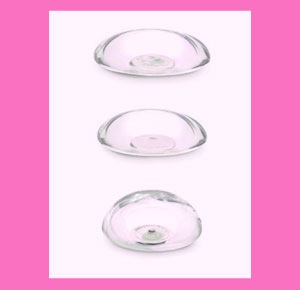
Saline breast implants are a popular type of prosthesis used in breast augmentation surgery. Saline implants have been used since the mid 1960’s and continue to be a mainstay of cosmetic breast surgery today. Saline implants have made a big impact in the United States, due to the banning of silicone implants in the early 1990s. Saline implants have also revolutionized the art and science of breast enlargement surgery.
This resource section investigates the positive and negative considerations that are associated with saline-filled breast implants.
Saline Breast Implant Construction
The outer shell of the saline implant is made of relatively thick vulcanized silicone elastomer. The shell is empty when implanted in the patient and is filled with the sterile saline solution once the prosthesis is in place. The saline fill volume is very important, since too much will cause the implant to rupture and too little will create unnatural folds and creases in the shell of the prosthesis. Remember that saline implants are constructed using the same type of silicone shell found in silicone breast implants. They are not silicone-free.
Overfilled breast implants and underfilled breast implants allow full customization of look and feel to fit exacting patient demands.
Saline implant lifespan is always a concern, since most women will need to replace their prosthetics at least once during their lifetime.
Saline Filled Breast Implant Benefits
Saline implants were invented to provide a realistic look and feel while maintaining safety for the recipient. Unlike other types of implants, the filler material in saline breast prostheses is completely organic and harmless to the health of the patient.
The small unfilled size of the implant shell allows for implantation through a very small incision. Saline implants provide the most options when deciding which type of entry incision to use. Saline implants can be made very large and are especially suited for women desiring atypical proportions. It is the saline implant technology which gave rise to the wave of ultra-large breast implants so often seen in the exotic entertainment and adult film industries.
Saline Implant Drawbacks
Saline implants are not considered to be as realistic in look or feel to silicone implants. This is especially true for women with minimal natural breast tissue.
Saline implants have a higher incidence of rupture than silicone implants. This is even more apparent now, since new cohesive gel implants do not fail even if the shell is pierced or compromised.
Saline implants have a limited effective lifespan and will usually need to be replaced at some point in the future. Some younger patients might require multiple replacement procedures during the course of their lives.
Saline Breast Implant Evaluation
Saline implants are far more popular in the United States than in the rest of the world. Now that silicone gel implants are once again legal in the US, manufacturers of saline prostheses are working hard to maintain their market share. Remember that saline implants can still be trouble if they rupture. Although the saline filler of these implants is harmless, the empty shell can pose a problem if it is close to the skin. Some women have even had the shell develop a hard edge after an implant rupture and threaten to break through the skin. Damaged breast implants should always be checked by your doctor immediately.
We provide expert guidance on achieving the best results from nonsurgical breast enlargement products and practices in our critically acclaimed book: Better Breasts Without Surgery. Best of all, you can get help 24 hours a day from anywhere in the world. You do not need to get breast implants in order to enjoy larger breast size.



